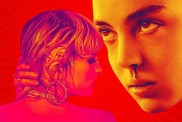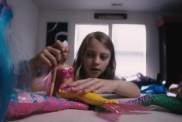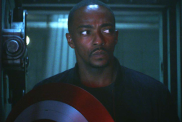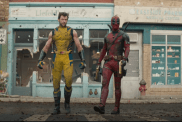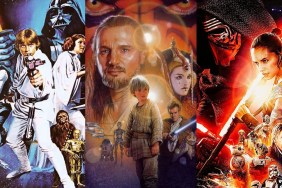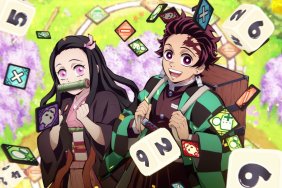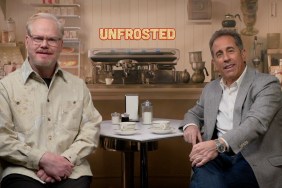
Over the next couple hours, we would talk to many of their artists and crew, but it made sense that we spoke to the directors first, since they could give us a good overview of the project as a whole and why they decided to make the movie.
ShockTillYouDrop.com: I know a little bit about the story from speaking to you before, but Chris, this started with you, so how long ago did this start? Did it start just as “Coraline” was winding down?
Chris Butler: Kind of, it’s been with me forever, and it’s absolutely from all the stuff I used to watch as a kid, just percolating away, and I always wanted to do this zombie movie for kids. That was the John Carpenter meets John Hughes thing, and I keep saying I started this ten years ago, but I’ve been saying that for six years
Sam Fell: So it’s at least twelve.
Butler: Yeah, it’s deeply in there and I definitely had the first thirty pages of script and the rest of the story was worked out but I hadn’t written it. I showed that to Travis (Knight) while we were still on “Coraline” and he was like “Where’s the rest?” “Oh, it’s at home” but then pretty much straight from “Coraline.” I haven’t had a vacation yet.
Fell: It’s quite a story. There’s a lot of backstory and other levels in there and it was quite a thing for us to get into at 85 minutes. It took a while to wrangle, but it’s so well developed and it’s been developed over so much time.
Butler: Brewing
Shock: Was there a definitive day when someone at Laika said “Now, you’re going to switch over and start working on this?” When that happened, what was the first thing you had to do? Besides finishing the script?
Butler: Call my Mum. (laughter) There were a few projects in development and it was a small team to start off with, just a handful of us, and then we got Sam over and we started talking it through, and we had a room where we just sat together and put the whole thing up on walls scene by scene. We started pretty small and I think that worked to our advantage.
Fell: Yeah, definitely. It was a solid start and just being developed for that long it was pretty solid already.
Butler: We had an ending. We always talk about in animation, it’s kind of the norm to work on a project where you’re kind of developing the ending of the story as you go along, because I come from the story department and that’s always the case. The third act is like, “We’ll figure it out.” (laughter)
Fell: There’s lots of running around and something noisy will happen.
Butler: Yeah, but we definitely had a very solid ending for this right from the start, and even from the writing, I knew what the ending was and worked our way back from that, but we’re not allowed to tell you about that.

Fell: There’s like levels in the story, and there’s a level where things are presented as you would expect them to be. Zombies are presented as classic zombies. The witch is presented in that way, and so we did use a lot of those archetypes, those signifiers that really push those buttons. I think what’s wonderful about the story is that as you go through it, it unfolds and things aren’t quite what they seem.
Butler: Absolutely. I think that’s definitely a big part of it. The opening of the movie is like a real trashy 80s zombie movie, complete with a lurid palette and really bad cuts in continuity, which is a struggle to do.
Fell: Yeah, we can’t do this. It’s bad filmmaking.
Butler: And it’s absolutely that, to set it up from the start what people’s expectations are of these things so you start out the movie by saying, “Zombies eat people’s brains.” We really specifically went for this Wicked Witch of the West motif for the witch because people know that and respond to it. We want to set up all these supernatural elements and then play with them.
Fell: It’s funny though because we’ve been developing the look of the ghosts, and there’s so many cool things you can do. We started going “Blue and see-through ugh we’re not going to do that” and we went off and discussed old film and all kinds of cool ideas and we developed that for a while and then after a couple of months, no one knew what it was. “What are those things?” So we had to put a bit of blue
Butler: That’s true. We had a really nice look for a while which was like a faded Polaroid, because we really played with this idea of ghosts as being treated like film, the older the ghost, the older the treatment of them, and it was a really nice conceit, but it was a little too
Fell: Confusing to people.
Butler: Yeah. “That’s not a ghost.” (laughter)
Fell: So you have to stick to some of those things.
Butler: You definitely have to tick the box and then kind of have some fun with it.
Shock: When you’re doing ghosts, are those being done on a separate stage and then combined together?
Butler: Not a separate stage.
Fell: Separate passes, like a green screen pass. Like we rehearse them all together in shots and then you have to split them.
Butler: A lot of the shots are split in some levels.
ShockTillYouDrop.com: Are you guys using CG more in this than they did in “Coraline”
Butler: I think we are, but that’s just to do with scope. I don’t think it’s that we’re specifically trying to have more stuff be CG. This is a bigger movie, it’s more FX heavy.
Fell: You kind of need it but esthetically, we make it feel it’s in the world of stop-frame still.
Butler: It’s primarily practical and we use CG where it’s effective, not just because we can.

Fell: There’s many clouds. Stop-frame films are not very well populated usually. And the other one is skies. Often in stop-frame films, skies are like a ceiling painting but we wanted the skies to be active and the sky is actually a character in the story in a funny way.
Butler: Even things like you’ve probably seen the rapid prototype replacement faces. Just painting out the seams and because on this movie, because it is a bigger scale, we’ve got a lot more characters. That means a lot more seams to paint in. Things like that that you don’t really notice, that’s part of it.
Fell: Yeah, and the utterly mind-blowing bit of CG is that the faces are all animated in computers early on. I think they’re going to take you on a tour and you’ll go see how this rapid prototype 3D printing thing works and how it relates to Maya.
Butler: It’s exactly what we did on “Coraline” but now we’ve gone a step further and we use color printers, whereas all the faces were printed on “Coraline” and then hand-painted, these are painted in the computer and painted out that way, which gives you so much more
Fell: Texture and color.
Butler: Yeah, you can do pretty much whatever you want. I mean Coraline had six freckles because someone had to literally hand-paint them in the same place on each face. Now we’ve got Neil who has thousands of freckles, and they’re all completely registered because they’re put on in the computer.
Fell: It’s changed a lot. The whole stop-frame thing is changing so rapidly.
Shock: So does that change the complexity of the look?
Fell: Yeah, you get a richer look, but it’s still not perfect which is one of the advantages of stop-frame that it’s hand-made and it’s imperfect and it’s messy and you get accidents and things like that. It’s real light and real surfaces.
Butler: Yes, which is imperfect. I think that’s part of it for us because we’ve been kind of flying by the seat of our pants with some things where you’re trying something that hasn’t been done before, and literally it’s going into production the next day. It’s worked out pretty well.
Fell: Yeah, we more than got away with it actually. It’s worked out way better.
Butler: There’s some things that hen you first see them on screen they’re just mind-blowing, like again, the printed ears seem light and diffuse.
Shock: And why is that possible?
Butler: Just because of the material that print from. It has a texture which refracts the light, but it’s also got a translucency to it, and previously, everything was pretty much done in silicone, so with the mechanical faces, you have your limitations with a mechanical face but you also have the limitations with the material that you’re using. Like Sam said, seeing real light on these printed faces has really opened this world up, because it has all the imperfections of skin, all the littlee dimples and pock marks and lines.
Fell: I don’t understand it entirely, I have to admit. (laughter) It definitely feels like it’s just skinning the surface.
Butler: Yeah, and everyday you think of something like, “What if we did that?” Now we’re at the end of shooting, so there’s a lot of things where we’re like, “Oooo, if only ” but the next project and the one after that.

Fell: Yeah, yeah. One eye than the other eye.
Butler: There’s other stuff we’re up to as well. I’m not sure if we’re allowed to say. The 3D with “Coraline” was really successful in terms of the stereo because I think it was subtle and understated and it was more drawing people in rather than having things come out. Apart from the obvious, you have to have a shot right at the beginning, we consult with these experts and they say “You need in the first few minutes to have something come out at the audience.” (laughs) But the rest of “Coraline” was really opening out the depth and pulling you in. We tried to do a couple things like that in this. It’s not the same thing because obviously “Coraline” had a much flatter real world and when she goes into the other world, it opens up. We’ve done a similar thing, very subtle, but when Norman is in the real world or surrounded by the mundane or his daily life, it’s a little flatter, but when you enter into this eyes and see ghosts, we open things out a bit. Because it’s a zombie movie (sort of) we also do (things sticking out) because it would be rude not to really.
Fell: But it seems to really help stop-frame to use 3D. There’s a lot of different people using 3D in different ways for different reasons but it just seems to bring stop-frame more to life.
Butler: Yeah, completely. I think that’s one of the reasons why people like stop-frame, because it seems so tactile. You want to reach in and touch it because it feels like a real
well, it is a real object and I think the stereo just adds to that.
Shock: Can you talk a little about the casting? You have a great cast including John Goodman, who seems to be doing something a little different than his usual and he seems to be having fun with it.
Fell: Yeah, he really commits.
Shock: Can you talk about building that cast?
Fell: It’s quite a mixture, wasn’t it? Because we have the kid protagonist, so we wanted to use real kids, or certainly young people so we got a little bit of truth and it worked really well. We had Kodi Smit-McPhee who is a great actor, and Norman is such an interesting boy. He has to be funny but also carry the drama of the show, and then we found this foil for him in Tucker Albrizzi, who is a new kid on the block, really. He’s a hilarious 11-year-old.
Butler: He’s so weird. He’s not now.
Fell: He’s getting more professional now but when we found him, there was this funky amateurism that he had. Yeah, he just has the most bizarre reads and we ended up coming up with tricks of how to get a more bizarre read out of him.
Butler: Yeah, like if you gave him the lines in advance and he learned them, it’s a little stilted, but if we surprised him, like we’d write words down on a card and surprise him, and it would come out so bizarre that we had to use it, because there was something so random and natural about it that didn’t feel learned and that’s absolutely what we were striving for, was having these kids feel like real kids.
Fell: And we got them together so they were playing off each other and stumbling and we’d capture all the messiness of that. Trying to get spontanaeity in animation is a difficult thing.
Butler: It’s definitely an ensemble piece as well, which I think why the whole cast had to have equal weight, because we end up on this “Scooby-Doo”-esque adventure with this van full of kids, so we really wanted to make sure that tonally their voices worked together, the way they sounded. They go from the two 11-year-olds and then there’s Alvin, he’s 13. He’s the school bully but he’s been held back in class so much that he could in theory be 25. (laughter) So there’s him, played by Christoher Mintz-Plasse, and then we had Courtney and Mitch who are the older teens, and that’s Casey Affleck and Anna Kendrick, and getting those voices together, we would get clips of them with the character designs and really press them together tight, because there’s a lot of overlapping stuff and some real high-octane stuff. There’s a van chase, and we wanted to make sure the sounds really worked together.
Fell: And as with all the other things in the film, there’s the archetypes so we have the bitchy cheerleader
Butler: Which Anna Kendrick does fantastically.
Fell: But also, she’s a good actress because there are moments when we really have to dig into the characters and then have them be real, so that was a requirement of all of them really, wasn’t it? That they could act as well as be funny.
Butler: John Goodman was great. It was a treat working with him.
Shock: I’m sure you’ll be asked this a lot of times, but doing a horror movie like this that’s meant to be seen by kids, how far can you push things and how much do you have to hold back? Because you have zombies which can be scary but you also have to keep it from giving kids nightmares.
Butler: Well, I think the scariness of it we have a lot of fun with this, but the “Scooby Doo” factor is a big part of this. Noone’s ever scared by “Scooby Doo,” but you can really enjoy the monsters and for me, that’s part of the fun of kids movies is having monsters that you can squeal at. I think “Coraline” was very creepy, but it was from a slightly different perspective. It as more like a dark fairy talethe fear of having your parents replaced, which is pretty traumaticwhere we play off the roller coaster kind of scares, like the zombies popping out, but they’re kind of rubbish.
Fell: We always balance the story so we’ll have quite an intense scene and then you’ll go to something really mundane.
Butler: And we have a lot of ludicrous characters. Like to burst that horror bubble, you throw these really funny characters in scary situation. We always try to have a joke to alleviate it. It’s as much a comedy as anything else.
Fell: Yeah, I think kids enjoy that. You go along and feel a bit of fear for a moment and then you get over it.
Shock: What about some of the references like “Friday the 13th” which kids might not get that you still throw in there?
Fell: That’s for the parents really.
Butler: I was going to say that that’s for me. (laughter) But anyone who enjoys it. It’s not like we’re specifically layering it but I think any good story has that complexity of layering, any good family movie should be enjoyed by kids and adults and not necessarily for the same reason. We actually talked to Chris and Sam for another half an hour, but we don’t want to bore you with a long interview and want to get back into the other cool stuff we saw on set. Maybe we’ll run more of this sometime down the road.
